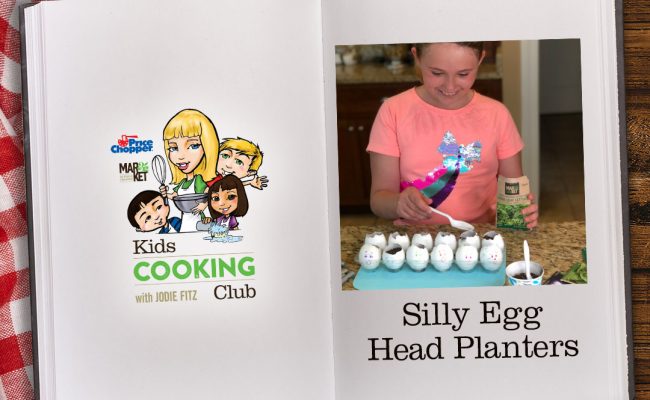
Silly Egg Head Planters by Jodie Fitz
Whether you’re an avid gardener or a novice, these eggshell planters are a great way to craft and recycle while celebrating Earth Day and starting your garden prep. You can plant vegetables, fruits or herbs, and if you don’t like to garden, you can plant flowers or grass and still have fun!
Supplies Needed:
Eggs
Egg Carton
Vegetable or herb seeds
Colorful permanent markers
Seed starting potting mix
Plastic Spoon
Easy Instructions:
To prepare in advance, when baking or cooking with eggs in the days before the activity, crack them at the top so that you keep three-quarters of the eggshell intact.
- Place the empty eggshells in an egg tray and let dry overnight. The tray will provide stability for your eggs once they are planted.
- Gently create silly faces on the eggs using permanent, colorful markers.
- Using a small plastic spoon, fill the eggs with potting soil.
- Add 1 to 3 seeds (depending on what you are planting) into the dirt and cover the seeds with a little more soil.
- Water the plants.
More on making Silly Eggshell Planters:
All Planted: Keep your silly egg heads in a sunny window and water as needed. Germination time depends on the plant. You can learn more on your seed packet(s).
Find the Supplies: You can find almost everything you need for this activity when shopping at Price Chopper/Market 32.
- Markers: school supply aisle.
- Plastic spoons: paper supply aisle.
- Eggs: dairy aisle.
- Seeds: floral department.
- Potting soil: seasonal aisle or floral dept.
Watering Suggestion: PICS brand paper coated cups are great for watering. You can squeeze the cup to create a spout and control the amount of water. They can also be found in the paper supply aisle.
Transplanting: Eventually, the seedlings will outgrow the eggshells. You can transfer them to a larger planter or your garden, depending on the weather. Gently break the shell and plant it with the seedlings; it helps to feed the soil and your plant.
